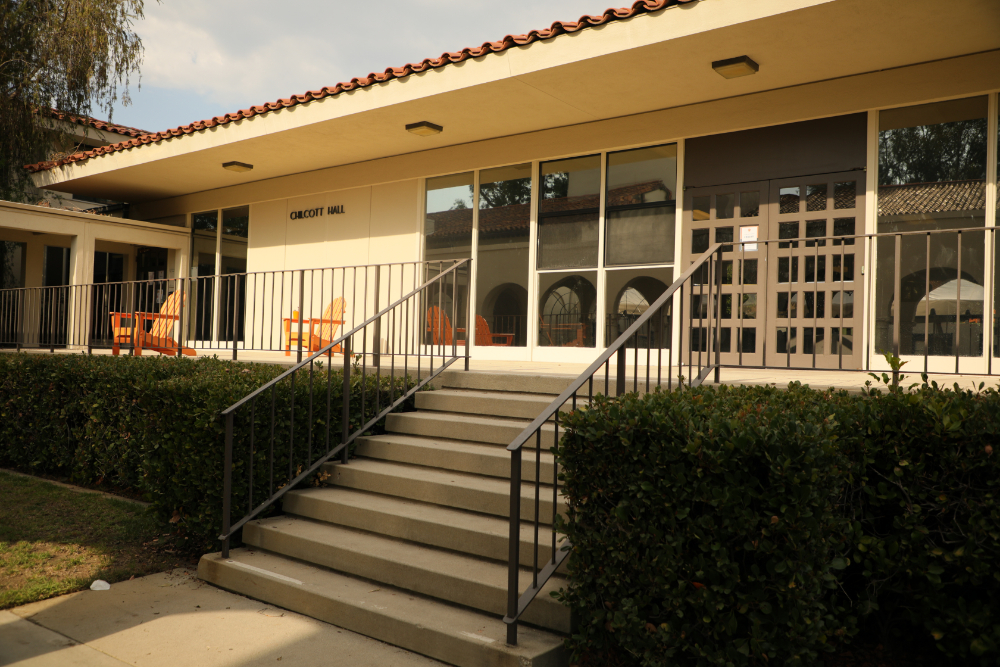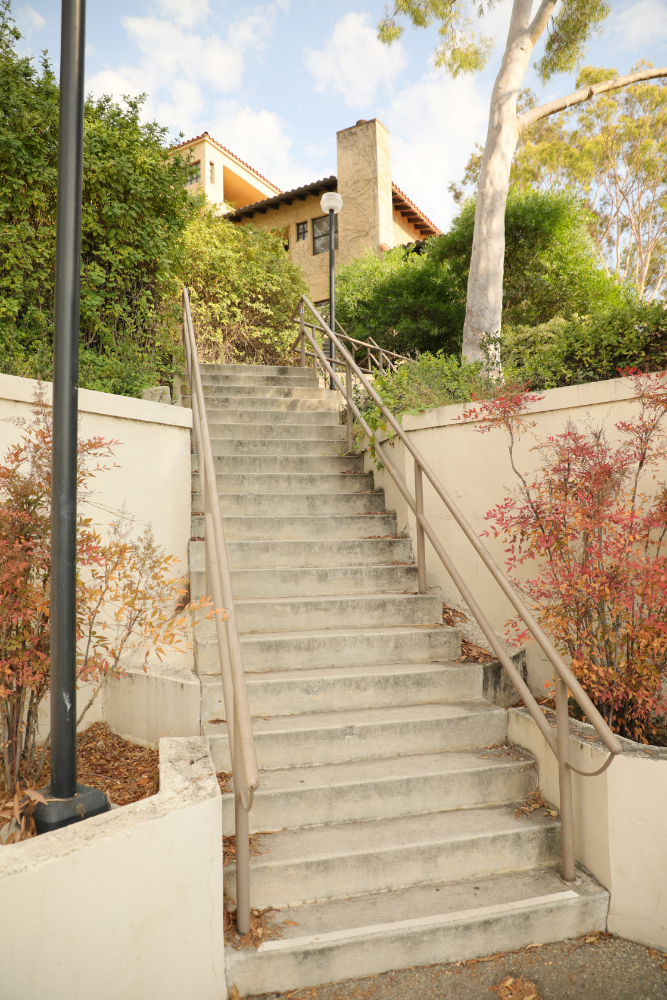Within the first week of school, Grace Clement (junior) was planning to drop a playwriting class because it was located in Keck Theater, a walk that is not possible for her because of her cerebral palsy. Clement said that her professor, Laural Meade, readily offered to drive her up the hill every Tuesday and Thursday to ensure that a lack of accessibility did not force her to drop the class.
Clement said other students face similar obstacles navigating campus, though their disabilities may not be as obvious.
“I have met several students at Oxy who have invisible disabilities that restrict them,” Clement said. “I may be the only visibly disabled person on campus, but there are definitely [other] people who are struggling.”
The location and steep incline of Occidental’s campus provide a unique challenge to ensuring accessibility, according to Luci Masredjian, director of Disability Services and student support.
The hill is one of the many aspects of campus’s inaccessibility, according to Clement, as uneven slabs of sidewalk, limited elevators in dorms and the lack of handrails on stairways also create obstacles in her daily life.
“If I’m going to move all the way out to Los Angeles, it better be ready to handle me,” Clement said. “I’m ready for Los Angeles, but the question is: is Los Angeles ready for me?”
Occidental’s lacrosse head coach, Hannah Khin, tore her Achilles tendon in late August and now relies on crutches or a scooter to get around. She said she is worried about walking from her office in the Alumni Gym Fitness Center to the Jack Kemp Stadium on crutches.
“There’s no ramp to get from the two back doors that lead straight to the track or field,” Khin said. “That was the first thing I thought of: when we are in season, I will have to get out to the field.”
Khin said that she has not gone anywhere on campus besides the athletic facilities since the start of the semester, as the trek to the Academic Quad or the Arthur G. Coons administrative building (AGC) seems too difficult. She now relies on her current players to show high school lacrosse recruits around campus.
Many student athletes have short-term injuries that affect their mobility, according to Khin, and the lack of railings and automatic doors create an inaccessible environment.
Supporting students with disabilities is the mission of Disability Services. From securing accessible housing to changing the location of classrooms, the team works to ensure every student has their individual needs met, according to Masredjian.
Clement said she has worked with Disability Services since she committed to Occidental.
“Luci [Masredjian] was pretty much there for me every step of the way,” Clement said. “Discussing things with me and my family. Trying to find correct housing, trying to figure out different routes I could take to get to classes and making sure that all the accommodations I needed in my room would be installed before I arrived.”
Masredjian said the best way to navigate an inaccessible area of campus is to reach out to Disabilities Services and once they are aware of an issue, they will then work with Facilities to address the problem. Facilities can fix certain issues within a few days, like a broken elevator, but other structural problems require a lot more money and time, according to Masredjian.

According to Chris Reyes, interim director of Facilities Management, funds are set aside from the Major Repair and Renewal Fund (MRR) each year to cover accessibility issues. A previous student at Occidental, for example, found the absence of handrails outside of Haines Hall was inhibiting their ability to walk to and from their dorm to other parts of lower campus, according to Masredjian. They reached out to the Disability Services team, who then communicated with Facilities, and handrails were installed in front of Haines during the Fall 2016 semester, Masredijan said.
The Disability Services team has also moved two classroom locations this year to accommodate students, and worked with Facilities to fix the elevator inside the Marketplace, according to Masredjian.
“Please reach out. This is what we need as a community,” Masredjian said. “Any barrier that we can eliminate, not only helps the student who has a need for access, but it’s helping all of us.”
Clement said the lack of elevators, handrails and other infrastructure for accessibility feel like a subliminal message to people with disabilities that they are not welcome on campus.
“I think it’s that kind of systemic ableism where it is an unspoken rule that since the inception of higher education, it has never been meant for disabled people,” Clement said.
All students should advocate for students with disabilities on campus, Clement said. These architectural issues need to be addressed, according to Clement, and she is working to make this a reality.
“If I, by the time I leave this school, can make it so that students like me can go to Occidental and can really be a part of their community,” Clement said. “Then that would probably be one of the greatest things I could accomplish in my time here.”
![]()



































